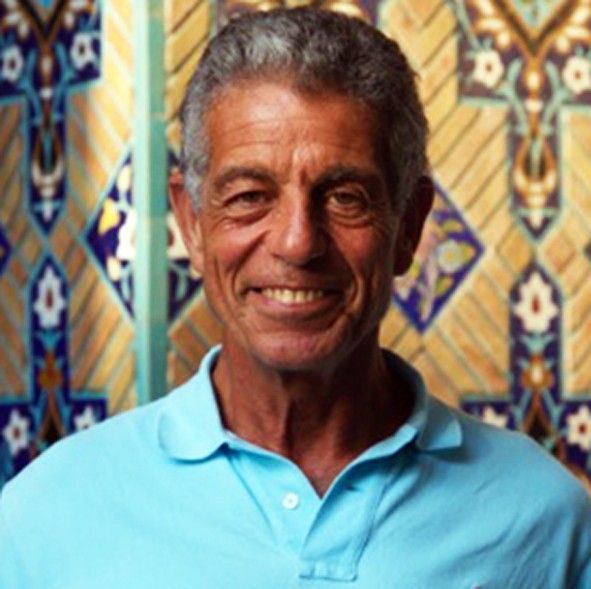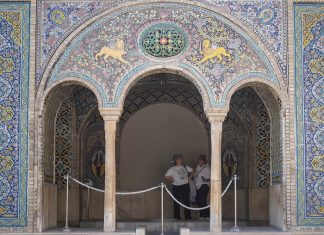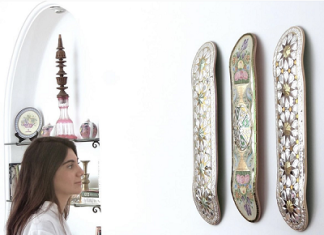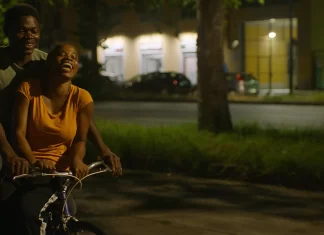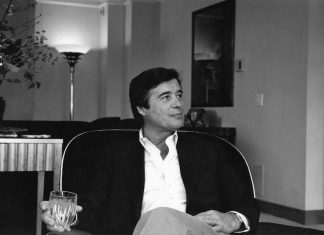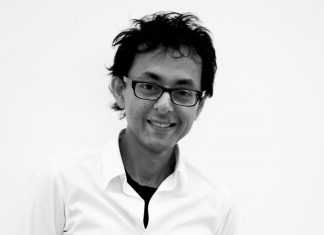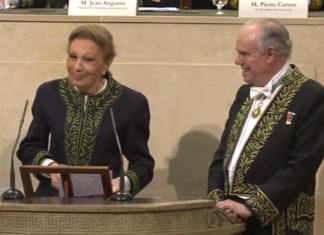By Paola Totaro
Queen Elizabeth II’s 90th birthday celebrations last May were a lavish week-long affair. One glamorous highlight was the Royal Windsor Horse Show held at Windsor Castle, involving more than 900 horses and 1,500 participants from all over the world. Soon, a specially commissioned book of the show is to be released with illustrations by the Iranian-born photographer Henry Dallal, a royal photographer who is also internationally recognized for his beautiful portrayals of horses.
 Dallal lives and works out of an eclectic city-pad-cum-studio in London’s exclusive Mayfair. He is surrounded by paintings, mementoes and walls of magnificent images of galloping horses: from stallions seemingly flying over the stark open spaces of the Turkmen Steppes to the thoroughbreds engaged in the pomp and tradition of the Queen’s Household Cavalry in the streets of central London. Richly coloured Persian carpets cover every inch of the floor. Beautiful, large photographic books are piled high on tables. Everywhere are signs of travel, adventure and a life lived well.
Dallal lives and works out of an eclectic city-pad-cum-studio in London’s exclusive Mayfair. He is surrounded by paintings, mementoes and walls of magnificent images of galloping horses: from stallions seemingly flying over the stark open spaces of the Turkmen Steppes to the thoroughbreds engaged in the pomp and tradition of the Queen’s Household Cavalry in the streets of central London. Richly coloured Persian carpets cover every inch of the floor. Beautiful, large photographic books are piled high on tables. Everywhere are signs of travel, adventure and a life lived well.
Dallal has recently returned from a trip ‘home’ – back to Iran for the first time in close to four decades. It still feels slightly unreal. Bright-eyed and vivacious, he shares his feelings for the homeland in a wide-ranging conversation with Kayhan London.
“It was magical, very emotional for me,” he says of being back. “In that moment, I remembered my dad and the effort that my parents put into bringing us up.”
“It was such a fantastic childhood, and there, in that spot, is what it was all about. It was there that I felt it. I really felt it.”
Born in Iran in 1955, Dallal, like so many of his compatriots, fled after the fall of the Shah in 1979, moving first to London, then to the United States and then back to the U.K. in 1994. One of his last memories of his beloved homeland was a trip in 1979 to the wilds of northeastern Iran, where he paid a visit to an old friend: the late Louise Firouz, an American-born horse breeder and researcher who married a member of the Iranian aristocracy, fell madly in love with the culture, and ‘re-discovered’ the ancient and rare breed now known as the Caspian horse, spending a lifetime preserving the breed and advocating for its protection.
 “I dragged my mother to visit Louise and to spend some time in the place where she lived, near the Turkmen tribes on the Turkmen steppes. It was wonderful. We were riding in wild grasses up to the withers of the horse, those wide open spaces, and it was beautiful, just beautiful.”
“I dragged my mother to visit Louise and to spend some time in the place where she lived, near the Turkmen tribes on the Turkmen steppes. It was wonderful. We were riding in wild grasses up to the withers of the horse, those wide open spaces, and it was beautiful, just beautiful.”
“Those were my last few days in Iran, and two days later I was on a plane. It was June 16, 1979. Every year, I mark the anniversary. They say you can take a person out of a country but you can’t take the country out of the person, and it was always my dream, somehow, to go back.”
A letter arrived out of the blue about a year ago from one of Louise’s daughters, Ateshe. This was followed a few months later by an email from one of her grand-daughters, Touran, who said she was coming to London the following week.
The plane bringing Touran to London landed early and punctually. Touran walked in and said, ‘We know you’d like to come to the Caspian Horse conference in Iran. We would like you to be patron of the conference.”
Dallal was completely speechless. “I thought, this is amazing: My last experience of Iran was with Louise Firouz. That was my goodbye to Iran, and now, to return to Iran for the first time in her memory, through her daughters and grand-daughter . . . it seemed too good to be true. If I needed an excuse to return, this must surely be it.”
And so it was that within weeks, Dallal found himself negotiating birth certificates, passports, visas. For once, he laughed, bureaucracy was on his side, and he managed to secure all the paperwork needed within just a few days.
An added honour was a letter addressed to the conference from Prince Phillip, who has long been a keen horseman and a supporter of Louise Firouz’s campaign to safeguard the Caspian horse.
“For the first time in 36 years, I was home, on Iranian soil . . . can you imagine how that felt? All those years, I thought I was going to get off the plane and kiss the ground, but then I get there and of course it is all changed: all tunnels, air bridges, and no ground to kiss when you get off!”
Returning to Iran brought with it a rush of mixed emotions. After delivering an emotional speech – and a beautiful video tribute to Louise Firouz and her life’s work – at the Caspian horse conference, Dallal hired a driver and went off to look for evidence of his family’s old headquarters.
His search began with a villa on the Caspian Sea where he spent many “wondrous summers growing up.” When he actually found it, he realized that while it looked abandoned at first, someone had been watering the garden, and there were signs of care.
“I pushed open a window and went in, and there they were, the very same light fixtures chosen so carefully by my mother still in the kitchen and throughout the house, and the curtains in the bedroom – although faded,” he says, shaking his head.
“We had a shower room and I remember it had a window and my mother bought something to put on the glass so people couldn’t see in. There it was, still there 40 years later. It was amazing.”
Dallal was amazed at the pace of development, the high-rises, the highways that now connect Tehran with the places in the north he remembered from childhood, including one of his family’s old homes.
In the days that followed, he continued to dig deeper into his past.
“I went to look for our school, the Community School. It took me three hours, but I found it. None of the roads are the same, Tehran has exploded in size, and yet it is exactly the same school and the same building – although now it is a school for boys only. I took pictures and sent them to my Community School classmates. They have gone viral!”
A visit to his father’s old office near Tehran’s bazaar – “they have a metro all the way there, we never had that!” – was the most moving moment of all.
“It was when I came out from there that I broke down, because I remembered my dad’s enthusiasm for his business: that is where he worked and I also went to work there after university. But it was thanks to his and my mother’s efforts and sacrifices that my sisters and I had such a fantastic childhood.”
Dallal’s life as a photographer began at an early age. After the ’78-’79 Revolution, his career saw him working in real-estate investment and finance in Europe, the United States and the Middle East. He has spent the last three decades, however, immersed in the dual passions of horses and photography. Both were ignited in childhood by his parents: at the age of nine when his father gave him his first box brownie camera during a trip into the mountains of Iran, and when his mother gave him riding lessons.
During his earliest years in London, he remembers clearly hearing the sound of hooves on cobblestones outside his London flat. It was the Queen’s horses, the Household Cavalry, and he sees this is as the moment that sparked his passion to document the lives of those who live and work with horses.
 It took another sixteen years for his first project to emerge. He was invited to ride with some of the Cavalry on the invitation of a friend, documenting everything – from the exercises in Hyde Park to the big moment they work towards all year: Trooping the Colour. His first book in the series, titled “Pageantry and Performance,” was published in 2003.
It took another sixteen years for his first project to emerge. He was invited to ride with some of the Cavalry on the invitation of a friend, documenting everything – from the exercises in Hyde Park to the big moment they work towards all year: Trooping the Colour. His first book in the series, titled “Pageantry and Performance,” was published in 2003.
Since then, Dallal has published several award-winning coffee table books and has photographed British, Canadian, Indian and Middle Eastern pageantry. He has had the honour of photographing Her Majesty the Queen, European royals, sultans and emirs and their horses.
Dallal’s defiantly non-digital, untouched photography has been exhibited at Blenheim Palace, Kensington Palace, the Naples Museum of Art (US), the Royal Geographical Society, Smithsonian Institution, Balmoral Castle and Windsor Castle.
More recently, he worked in Paris at the Climate Change conference after his collaboration on another book, “Addressing Climate Change,” which contains a foreword from Ban Ki-moon, the outgoing secretary general of the United Nations.
Dallal says his return to Iran crystallized in his mind the urgent need for his compatriots to understand how precious and important it is to preserve the Caspian horse as a cultural treasure.
“The first thing I said, in Persian, was: ‘What is it about the horse that draws everyone together, from royalty to farmers to sportsmen to warriors? What is it that knows neither national boundaries nor culture?’”
“I wanted to leave a message for the audience that among Iran’s many treasures, this country also has something like seven or eight indigenous horse breeds. These horses have been roaming forever, and you cannot separate a particular breed of horse from the culture of those who look after it.”
“These too are Iranian treasures, and we must be proud and value, celebrate and preserve them for future generations.”

